Xanthi,East Macedonia and Thrace 作者: 来源: 发布时间:2021-07-12
I.Population and Area
Coordinates: 41°8′N 24°53′E
Administrative region East Macedonia and Thrace
Regional unit Xanthi
Area
• Municipality 495.1 km2 (191.2 sq mi)
• Municipal unit 153.1 km2 (59.1 sq mi)
Elevation 43 m (141 ft)
Population (2014)
• Municipality 70,873
• Municipality density 140/km2 (370/sq mi)
• Municipal unit 63,083
• Municipal unit density 410/km2 (1,100/sq mi)
Community
• Population 56,151 (2014)
Time zone UTC+2 (EET)
• Summer (DST) UTC+3 (EEST)
Postal code 671 00
Area code(s) 2541
Vehicle registration AH
Xanthi is a city in the region of Western Thrace, northeastern Greece. It is the capital of the Xanthi regional unit of the region of East Macedonia and Thrace.
Amphitheatrically built on the foot of Rhodope mountain chain, the city is divided by the Kosynthos River, into the west part, where the old and the modern town are located, and the east part that boasts a rich natural environment. The "Old Town of Xanthi" is known throughout Greece for its distinctive architecture, combining many Byzantine Greek churches with neoclassical mansions of Greek merchants from the 18th and 19th centuries and Ottoman-era mosques. Other landmarks in Xanthi include the Archaeological Museum of Abdera and the Greek Folk Art Museum.
Xanthi is famous throughout Greece (especially Macedonia and Thrace) for its annual spring carnival (Greek: καρναβάλι) which has a significant role in the city's economy. Over 40 cultural associations from around Greece participate in the carnival program. The festivities which take place during the period include concerts, theatre plays, music and dance nights, exhibitions, a cycling event, games on the streets, and re-enactments of old customs.
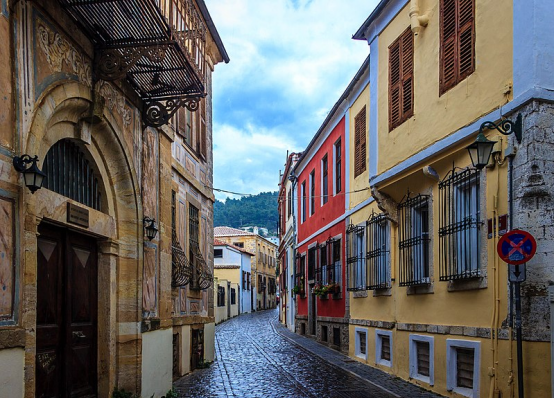
II.Natural Geography (environment and resources)
Transport
Road Transport
A few kilometers outside Xanthi, the Egnatia Motorway crosses Xanthi with Macedonia, Epirus and the rest of Thrace. The Xanthi Bus Station runs daily services to several cities throughout Greece. Xanthi is 206 km from Thessaloniki, 704 km from Athens, 397 km from Istanbul and 236 km from Edirne. On January 15, 2010, the Agios Konstantinos border crossing point between Greece and Bulgaria was inaugurated, 51 km from Xanthi, linking the nearby village of Thermi with the town of Zlatograd. Under construction is the vertical cross-border axis of Egnatia Road, which will connect Xanthi with the Bulgarian town of Rudozem.
Rail Transport
Outside Xanthi is the Xanthi railway station on the Thessaloniki-Alexandroupoli line, with daily services to Thessaloniki and Alexandroupolis.
Air Transport
Xanthi does not have an airport. It is mainly served by Kavala Airport, 42 km away, and secondarily by Alexandroupolis Airport, 112 km away.
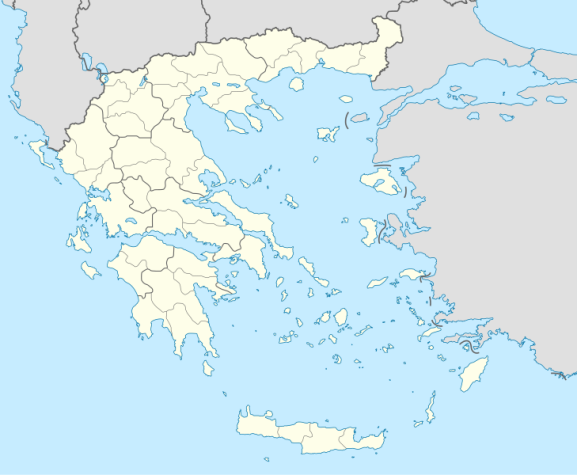
III.Economy
Xanthi - Euro per inhabitant
12,200.00
in 2011
Though Xanthi euro per inhabitant fluctuated substantially in recent years, it tended to increase through 2002 - 2011 period ending at 12,200 in 2011.
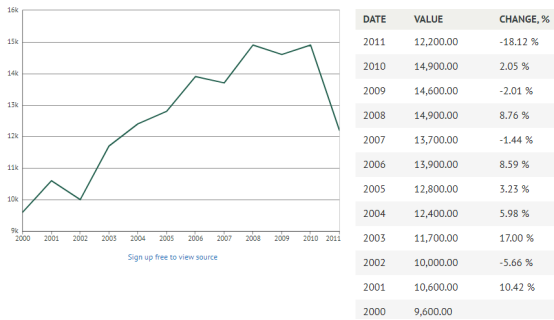
Reference: https://knoema.com/nama_r_e3gdp/gross-domestic-product-gdp-at-current-market-prices-by-nuts-3-regions-discontinued?tsId=1087960
REGINAL: XANTHI
CONTRACTUAL PUBLIC EXPENDITURE (EUR MIL.) 16,66
G.D.P. PER REGIONAL UNIT R.U. (EUR MIL. 2015) 1.073
Reference: https://www.google.com/imgres?imgurl=https%3A%2F%2Fwww.researchgate.net%2Fprofile%2FChrisovalantis_Malesios%2Fpublication%2F328679894%2Ffigure%2Ftbl4%2FAS%3A750080239882242%401555844473817%2FTotal-contractual-public-expenditure-and-GDP-per-RU.png&imgrefurl=https%3A%2F%2Fwww.researchgate.net%2Ffigure%2FTotal-contractual-public-expenditure-and-GDP-per-RU_tbl4_328679894&tbnid=RQ-Hm7-b4mKebM&vet=12ahUKEwj9hZnz-vvrAhUTA6YKHQwjD1AQMygDegUIARClAQ..i&docid=AvvWOQhfwEcd2M&w=850&h=304&itg=1&q=Xanthi%20gdp&ved=2ahUKEwj9hZnz-vvrAhUTA6YKHQwjD1AQMygDegUIARClAQ
IV.Industrial Characterisitics
Traditionally, the tobacco business, commerce, and farming have been the primary occupation of the residents of the area. During the last decades, tourism has also increased, especially during the period of the "festivals of the old town".
V.Attractions
1, Holy Monasteries - Temples of Xanthi
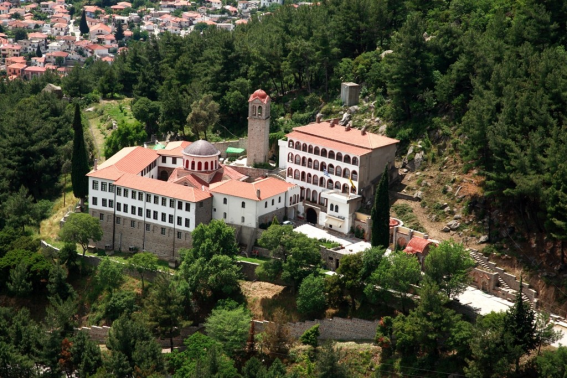
Although it is not known exactly when these monasteries were first built, the local tradition dates them back to Byzantine times. And so it must be because from 950 to 1350 AD. The mountain range from Xanthi to Komotini was full of monasteries where great men, lords, generals, landowners, educated teachers and wise teachers, from Constantinople and all of Thrace, ascended and consecrated. Among other things, Saint Gregory Palamas consecrated here for a while, before becoming archbishop in Thessaloniki. Even today the whole place is full of ruins and foundations of temples, monasteries and hermitages.
There were so many monasteries that the whole mountain was then called PAPIKIO and in fame it was equal to the well-known Mount Athos.
So the three monasteries are the only remnants of the many monasteries of that time and it seems that they managed to survive because they were connected to the city of Xanthi:
Holy Monastery of the Greatest Brigadiers
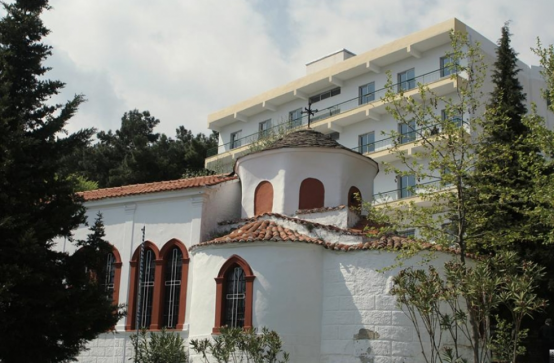
The Holy Monastery of Pamegiston Taxiarchon is located northwest of the city and at an altitude of about 150 meters.
The history of our Monastery is unknown, since no sources from its long historical path have been saved.
The monastery seems to have flourished in the 19th century, while at the beginning of the 20th century the Metropolitan of Xanthi Ioakeim Sgouros made significant efforts for its reconstruction. Today, the Monastery, which is for men, houses the Ecclesiastical School of Xanthi
More information: https://im-xanthis.gr/2013/11/pameg-taksiarx/
Holy Monastery of Panagia Archangeliotissa
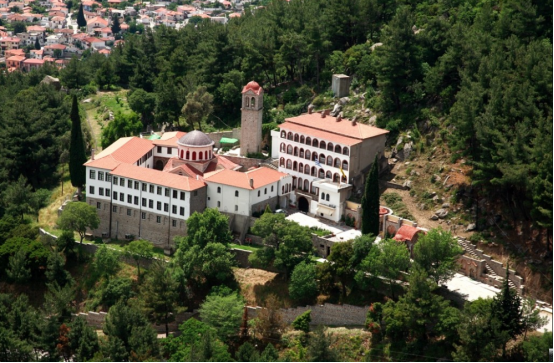
The Holy Monastery of Panagia Archangeliotissa is located northeast of Xanthi and at an altitude of 160 meters. In its current form, the Monastery was rebuilt around 1840 by the Metropolitan of Xanthi Eugenios (1831-1848).
The expenses were covered by money raised by the residents with fundraisers. The financial support of the tobacco traders of Xanthi was important. In 1913, during the First Bulgarian Occupation, the relics of the Monastery were removed and transferred to Sofia. Today, the Monastery is manly and in its eastern wing is housed the Ecclesiastical Museum of the Diocese of Xanthi.
More information: https://im-xanthis.gr/2013/11/panagia-arxageliotisa/
Holy Monastery of Panagia Kalamou
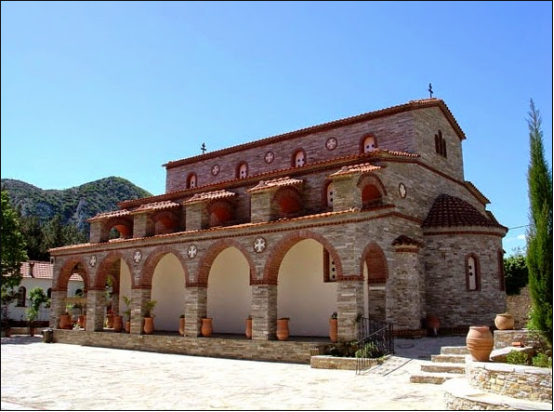
The Holy Monastery of Panagia Kalamou is built north of Xanthi at an altitude of 170 meters. Its name, according to tradition, comes from the finding of the miraculous image of the Virgin Mary in a reedbed on the banks of the river Kossinthos.
The monastery was probably founded around the 11th century. Indirect evidence of its historical presence during the period from the 11th to the 15th century are the liturgical manuscripts which are now in Sofia. After the middle of the 15th century, the Monastery flourished and in the 16th century it seems that a bibliographic laboratory operated in its area. From the 17th century a codex with a founding note is preserved, dating to 1645. In the 18th and 19th centuries the Monastery increases its property. After the significant damage suffered by the earthquakes of 1829, its reconstruction began, which should have been completed during the years of the Metropolitan of Xanthi Ioakeim Sgourou. The southern wing survives from that time. The historical events that followed contributed to its decline. Her relics were removed by the Bulgarian conquerors of Thrace in 1913 and are still in Sofia today. After the Asia Minor Catastrophe, her property was given for the rehabilitation of the homeless refugees. Of the relics preserved in the Monastery, the ephemeral icon of the Virgin of "Kalamiotissa", possibly a work of the 15th century, and the icon of the Assumption of the Virgin, a work of the 15th century, are of interest. The monastery is for women.
More information: https://im-xanthis.gr/2013/11/panagia-kalamou2/
Holy Monastery of Agia Irini
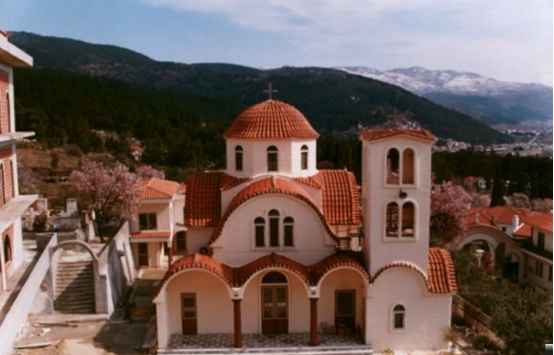
The Holy Monastery of Agia Irini is located on the northeastern outskirts of the city.
It was founded in 1972 as a nunnery by the Metropolitan of Xanthi Antonios. Its founder is considered to be Archimandrite Antonios Dalatsis. The "Agia Irini" Missionary Center operates in the area of the Monastery, which hosts orphaned children from Palestine. On June 27, 1994, the Presidential Decree of its establishment was published. The katholikon is honored in the memory of the great martyr Irene (May 5) and was inaugurated in 1982. There are seven temples and chapels in the monastery.
More information: https://im-xanthis.gr/2013/11/agiaeirini/
Church of the Brigadiers of Kavaki
Excerpts from the book "Xanthi - The city with a thousand colors" 2008, ch. The churches of Xanthi, GIORGOS TSIGARAS
The church of the Greatest Brigadiers of Kavaki is a simple three-aisled basilica with a later narthex.
In its current form, it was rebuilt in 1835. Possibly part of the church (the eastern wall) belongs to a building of the mid-Byzantine period. Its remarkable wood-carved iconostasis, probably made shortly after 1835, has a simple floral and animal decoration. The embroidered image of the archangel Michael is interesting. Work of the Constantinople, possibly, embroiderer Aikaterina Boulli, dedicated to the year 1839, according to the relevant inscription, by the Xanthi lord Sgourof.HOLY TEMPLES OF XANTHI
2, Ecclesiastical Museum of the Holy Metropolis of Xanthi
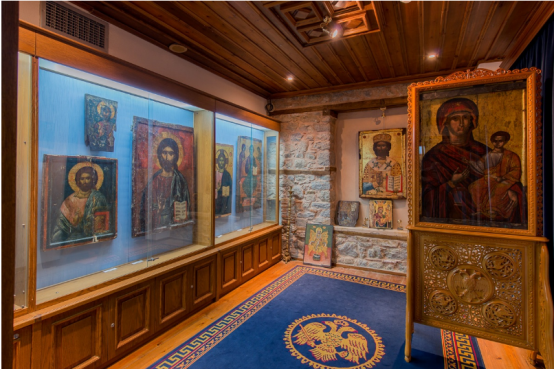
The Ecclesiastical Museum of the Holy Metropolis of Xanthi and Perithori is housed in the east wing of the Monastery of Panagia Archangeliotissa . The monastery is northeast of Xanthi. The museum collection was established in the early 60's by the then Metropolitan of Xanthi Antonios.
Exhibits of the museum are the collections of portable icons, silver liturgical utensils, manuscripts and printed liturgical books, but also of embroidered liturgical fabrics, as well as wood carvings. The exhibits date from the end of the Byzantine period until the beginning of the 20th century and present a panorama of the history of Byzantine and Post-Byzantine Art in the region of Thrace.
3, Old Xanthi
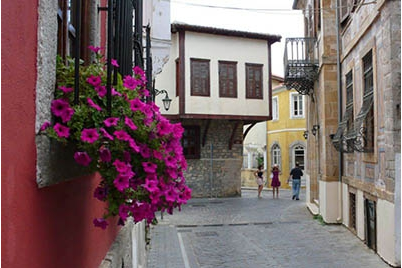
The Old Town of Xanthi is located in the northern part of Xanthi, constituting its historic core and covering an area of 380,000m 2 .
The city was built after 1829. It is the year that big earthquakes completely destroy the previous settlement. The city is built on the ruins and with the core of the churches, which existed probably from the time of Byzantine Xanthi, as the city of Xanthi was called from antiquity.
4, Traditional settlement Samakov
The settlement of Samakov is separated from Old Xanthi by the river Kosinthos. The total area of the district is about 100 acres. The number of properties amounts to 260 with a total area of about 58 acres and an average property area of about 220 square meters. m. Regarding the origin of the word Samakov, researchers provide three interpretations.
According to one version from the Saxon word samakovi. This is how the Saxon metallurgists called the heavy mechanical hammers that moved with hydraulic energy in their workshops. A second version states that it comes from the Bulgarian words samo - kovac which means only / only - blacksmith and a third from the words samo - kov, which is the root of the verb forge. In any case, the name is related to mining activities, common to all Balkan Samakovs.
5, Grand Maison - birth house of Manos Hadjidakis
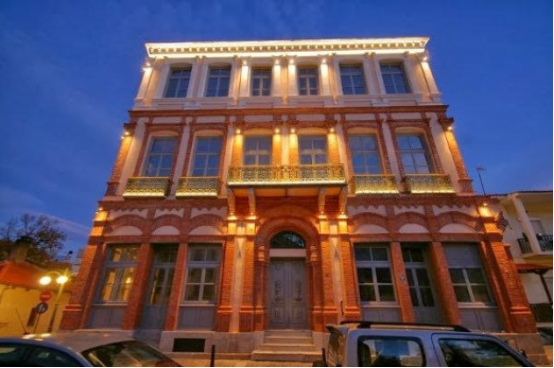
"I was born on October 23 in Xanthi, in the fairytale Old Town, the preserved" this is how Manos Hadjidakis described his birthplace in his autobiographical text. The image of the house, which is characterized as a work of art and as a historical monument today, after the interventions, is enchanting and is now a jewel of great value for Xanthi.
The house where the leading Greek composer was born and lived in his early years with the unbridled spirit and the bold thinking for his time, with the representations that have been seen in all their glory and the exceptional frescoes in all the spaces, was created to is a living space, constantly visitable and creative, a multi-space of Art and Thought which is identified with the "big Manos", the man of thought and art. A place where citizens will meet to compose a "New Narrative", under the fruitful and decisive influence of the supernatural musical universe and the consciousness of the ecumenical Manos.
The building was built at the end of the 18th century, at the same time as the Allatini villa in Thessaloniki, it has neoclassical elements and a bit of baroque. We do not know the architect, but he is probably Austrian.
6, Xanthi Bazaar
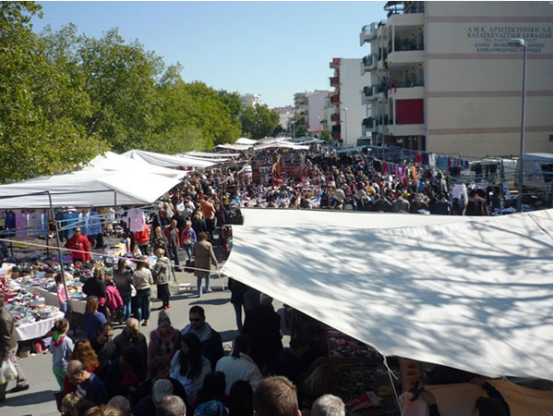
The long history of the bazaar of Xanthi is lost in the years of the Ottoman period. It unfolds, in many and detailed narratives of the ancients as well as the travelers in Thrace, with the first of them being found in the 15th century.
Examining the testimonies, it seems that the structural elements of the bazaar over the centuries have remained the same. The types of goods changed from time to time, as there was a period that functioned as an animal market and another as a market for fruit and vegetable producers. The day and the location also changed, as until 1920 the bazaar took place in the current central square, every Sunday.
The bazaar of Xanthi is one of the most important places for the development of outdoor commercial activity in Northern Greece. It attracts thousands of visitors all year round. Tourists from the Balkan countries and mainly from neighboring Bulgaria come all year round, while day trips are made every Saturday from the neighboring prefectures and in general from the prefectures of Northern Greece.
Christians and Muslims, Roma, as well as repatriates from countries of the former Soviet Union, but even Africans and Chinese coexist harmoniously, giving the bazaar a special color that one will not find in other open-air markets.
On their counters we will find everything from fruits and vegetables and all kinds of food, to carpets, blankets, clothing and footwear, household items and toys.
The colorful mosaic is completed by the constant presence of the inhabitants of the area, but also of the tourists who flock from all over Greece and abroad, justifying and preserving the myth around the unique atmosphere of the bazaar.
The vast majority of Xanthi residents will go through the bazaar even for a walk, without the intention to buy but there is no way they will not give in to temptation.
7, Tobacco Warehouse Area
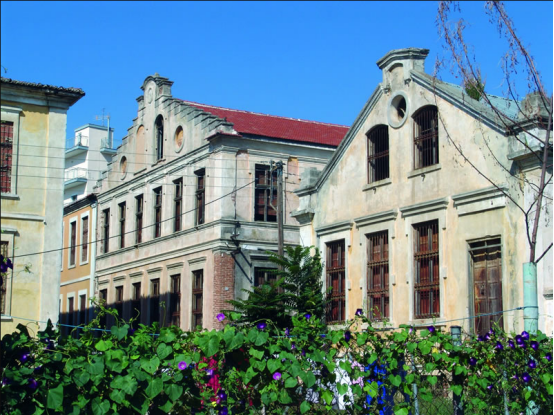
The area of the tobacco warehouses , - an important part of the city in size and value -, is directly connected with the economic prosperity of the city, is well preserved as an urban fabric and as a building stock and is one of the best existing sets of industrial architecture in Greece. . The buildings are creations of the late 19 th and early 20 th century and are excellent examples of architecture, some of them unique and for Europe.
The tobacco warehouses were built in the plain, southeast of the Old Town, and were a separate district, clearly separated from the central trade area and the residential area of the bourgeoisie.
The area was located near long-distance roads and railways (since 1891) and mainly near the axis that connected Xanthi with Genisea. At low altitudes, often flooded and damp, it was an unsuitable residential area, but favorable due to the composition of its soil for the construction of semi-basements, necessary for the operation of tobacco warehouses.
Today, the area of tobacco warehouses is located on the outskirts of the center, near Eleftherias Square and is bordered by Dimokritou, Michail Karaoli, Elpidos, Brokoumi, Georgiou Kondili, Navarinou, Ellis and Lefkippou streets.
The buildings of the tobacco warehouses that were saved until 1995, are summed up in 57, of which 27 were abandoned, while 30 operated with new uses (9 buildings as storage spaces, 17 buildings as mainly furniture and window workshops, while 5 of them housed cultural and leisure activities).
The first tobacco warehouses appeared after 1860 and were single-storey, implemented with traditional methods and materials and based on the use of local morphological elements and sometimes neoclassical motifs. The building volume of these tobacco warehouses is usually simple, rectangular, with flat faces, perforated by in-line openings, and covered with a simple four-pitched roof.
At the end of 19 th century warehouses were built much larger than the previous, also of wood and stone. Their main features were the symmetry in the organization of the facade and the floor plan, the axial access, the emphasis of the central entrance and the dominance of the facade, the strict geometric contour and the clarity of the building volume, the high height, the parapet that hides the end of the pitched roof and often forms semicircular or triangular gables.
8, Folklore Museum of Xanthi
The Folklore Museum of Xanthi was founded by the Progressive Union of Xanthi (FEX). Due to the small space it owned and because there is a large number of exhibits, it was extended to the mansions of Kougioumtzoglou and Kaloudi at the beginning of the 19th century.
The building is one of the most representative samples of a certain typology of houses that began to be built in the city of Xanthi during the last period of Ottoman rule, from 1830 onwards. It causes a sensation to every visitor.
The interior decoration emphasizes the aesthetic-economic and social level of the inhabitants. The frescoes of the Museum are from 1880, works of Bavarians and Germans.
The agricultural tools are in a defined order, depending on the season they were used. A whole treasure of aesthetic tradition, inextricably linked to the historical past of the city. Deftly carved chests, which hid sacred relics, jewelry, silver buckles, textiles, tsevredes, costumes of Thracians-Sarakatsani-Pontians.
Each piece has a special meaning, because each of those used in the past became a source of inspiration and ornament of today.
9, Museum of Traditional Costume of the Lyceum of Greek Women
The Museum of Traditional Costume was founded in 2009 and is housed in a restored traditional building of exceptional architecture with neoclassical decoration, which houses the Lyceum of Greek Women of Xanthi, Athens Branch. Exhibits of the Museum are the property of the association, acquired within 34 years since its founding.
The purpose of the museum is to highlight and promote the rich Greek costume, with an emphasis on that of Thrace. Six rooms house authentic costumes, exact copies of original costumes from various parts of Greece, along with their jewelry.
VI.History
Xanthi is sometimes identified with the ancient city of Xantheia mentioned in the 1st century BC by the geographer Strabo, but it was not mentioned by any other ancient historian. It began as a small village and experienced all the tumultuous periods of the history of Thrace, such as raids, disasters, ethnic conflicts, civil wars. The population of the region of Xanthi had dwindled down to almost nothing, as the region was depopulated in the 3rd century AD and almost everything had been destroyed when the Ottomans conquered the region in 1361. For this reason, the Ottomans brought settlers from within of Asia Minor, which is how Genisea (Γενισέα) was created, while Oraio (Ωραίο) and Xanthi remained mainly Greek and Christian centres.
Middle Ages
Known references to Xanthi (Ξάνθη), or Xanthia (Ξάνθεια), the city's origins are obscure; it was a prosperous stronghold of the Byzantine era but latter became a colony of the Ottomans known as Eskije. Xanthi is first recorded in 879 (Bishop Georgios of Xantheia is reported as taking part in the Fourth Council of Constantinople. From the 13th to the 14th century it was the most important city of the region. Three monasteries date from the Middle Ages: Pammegiston, Taxiarchon, and Panagia Archangeliotisa, although written records indicate several others now lost. Xanthi featured in the campaign of Andronikos II Palaiologos in 1327.
Early modern
By 1715, Xanthi, as well as Genisea, became renowned for its tobacco quality. Many foreign sightseers traveled throughout the region and described both the life and struggles of the locals. The tobacco trade throughout Europe led Xanthi into a course of prosperity. George Demetriou was active in the Xanthi area during the Greek Revolution of 1821. In March and April 1829 two earthquakes leveled the city, however, they played a decisive role in the further developments as the city's rebuilding immediately got underway. In 1870, the city of Genisea was burned down and thus all of the agencies and services were transferred to Xanthi which, at that time, had a population of about 10,000 inhabitants. In 1891, a rail line was established near the city, while further economic development led to the founding of schools and associations. During the late period of Ottoman rule until 1912, the city was administratively located in the Sanjak of Gümülcine within the Adrianople Vilayet.
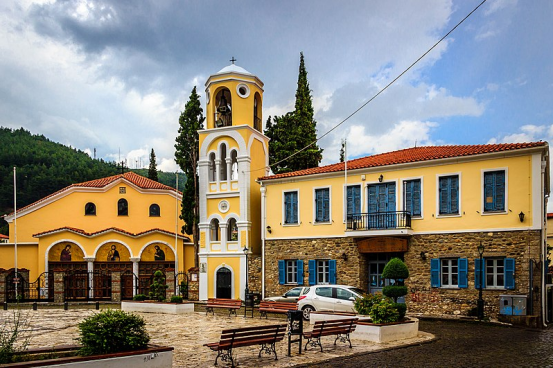
Balkan Wars
During the First Balkan War, Xanthi was captured by the Bulgarian army from the Ottomans in 8 November 1912. In the Second Balkan War the Greek army captured it in July 1913. However, with the Treaty of Bucharest, Xanthi along with Western Thrace were ceded to Bulgaria (where it was also called Скеча Skecha), and remained a part of the latter until the end of World War I. Following the Bulgarian defeat in this war, Western Thrace came under Allied administration and on 4 October 1919 the Greek army under Georgios Leonardopoulos command entered the city. That date is today celebrated in Xanthi as the anniversary of its liberation. Second lieutenant Gavriel Ladas, who was from Xanthi, led the first Greek troops in the city. Ladas became the mayor of Xanthi from 1959 to 1964.
World War II
On 8 April 1941 the 164th Infantry Division captured Xanthi following the German invasion of Greece and the Germans passed the city to Bulgaria, who occupied the whole region east of Strymonas, except a small German zone near the border with Turkey. The city became the administrative center of the Bulgarian province of Belomorie and served as headquarters for the Bulgarian Second Army. During the Bulgarian occupation, more than 2,000 men from Xanthi, both Christians and Muslims were sent for forced labor in Bulgaria. On 4 March 1943 the Jews of Xanthi were arrested by the Bulgarians and imprisoned in a tobacco warehouse. On 18 and 19 March, they were deported to Nazi concentration camps in Poland. From a community of 550 people, only six Jews survived the Holocaust. The city was liberated following the 9 September coup d'etat in Bulgaria when partisans of the Greek People's Liberation Army entered the city and took over control without a fight. However, the Bulgarian army remained in the region until the end of October 1944 and it withdrew under pressure from the Allies.
Today
Nowadays Xanthi is a modern city, rich in history, traditions and customs, and with many attractions for the visitors (including the surrounding areas). Xanthi is known as the city of a thousand colours, and like Komotini and Didymoteicho has a large population of Turkish-speaking Muslims dating to the Ottoman period. The Muslim population of East Macedonia and Thrace dates to the Ottoman period, and unlike the Turkish Muslims and Greek Muslims of Greek Macedonia and Crete was exempted from the 1922–23 Greek-Turkish population exchange following the Treaty of Lausanne. In 1972 the Greek authorities planned to demolish the landmark of the city, the clock tower, built by the pomak Hadji Emin Aga in 1870. This decision resulted in protests by the local Muslims and the plans were cancelled.
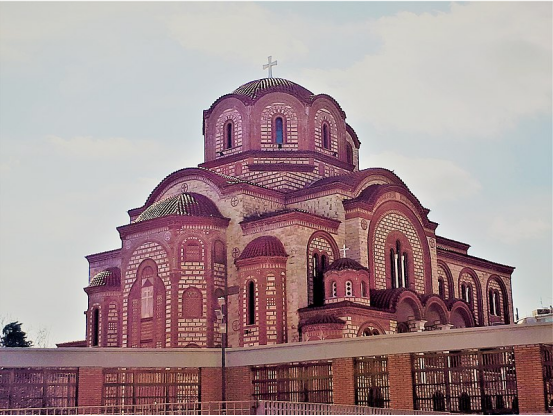
The Orthodox Cathedral of Xanthi.
VII.Other information
1, Cultural events
Carnival and old town's festivals
The city has a rich history, tradition, and customs and it is the cultural center in the area. It is also considered a multi-cultural city and it has been characterized as "the city of the thousand colours". Xanthi's Carnival is very popular (every February) and is one of the most popular in Greece, while the "old town festival" (early September) is equally famous. Furthermore, the bazaar of Xanthi is famous and takes place at Emboriou Square every Saturday. In addition, the Manos Hatzidakis' festival attracts worldwide interest.
Museums
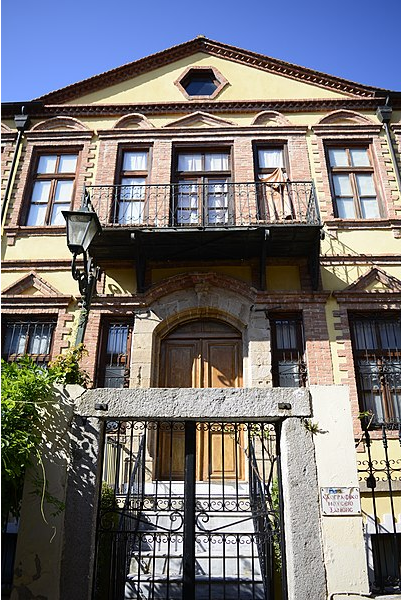
Folklore museum
-- Folklore and Historical Museum of Xanthi
-- Ecclesiastical Museum Metropolis of Xanthi
-- Municipal Gallery of Xanthi
-- Museum of Natural History
-- Foundation of Thracian Art and Tradition
-- Museum of the History of the Greek Costume
-- Tobacco Museum
-- Manos Hadjidakis House
2, Sports
-- Xanthi FC, plays in the Super League Greece
-- Xanthi BC, played in the Greek A2 League
-- Aspida Xanthi, football (one appearance in the First League) and basketball
-- Orfeas Xanthi FC, football
-- Orion Xanthi, basketball
VIII.Contact information
Mayor: Emmanuel Chr. Tsepelis
mayors office
Telephone: 25413-50810 25410-75555 25410-76392
Email: dimarxos@ cityofxanthi.gr
Website www.cityofxanthi.gr
Social Media:
Facebook: Δήμος Ξάνθης @cityofxanthigr
Twitter: Δήμος Ξάνθης @cityofxanthigr
Youtube: https://www.youtube.com/c/cityofxanthigr
Flickr: https://www.flickr.com/photos/cityofxanthigr
Roundme: https://roundme.com/@cityofxanthigr
